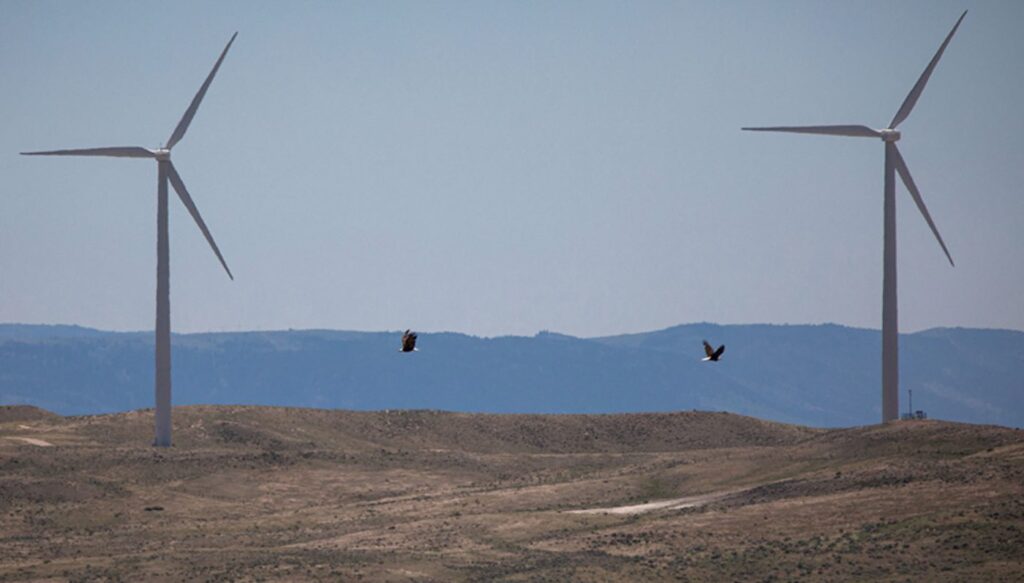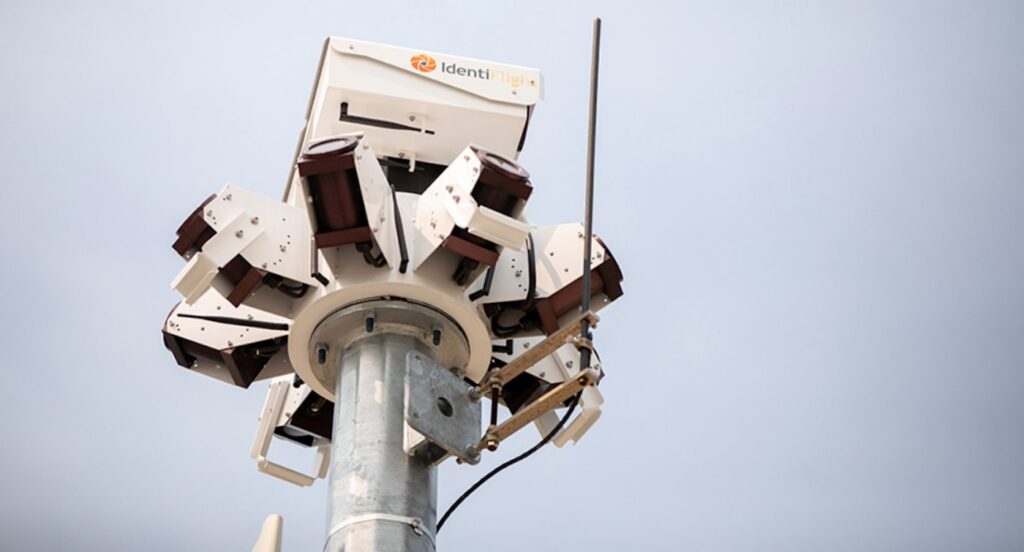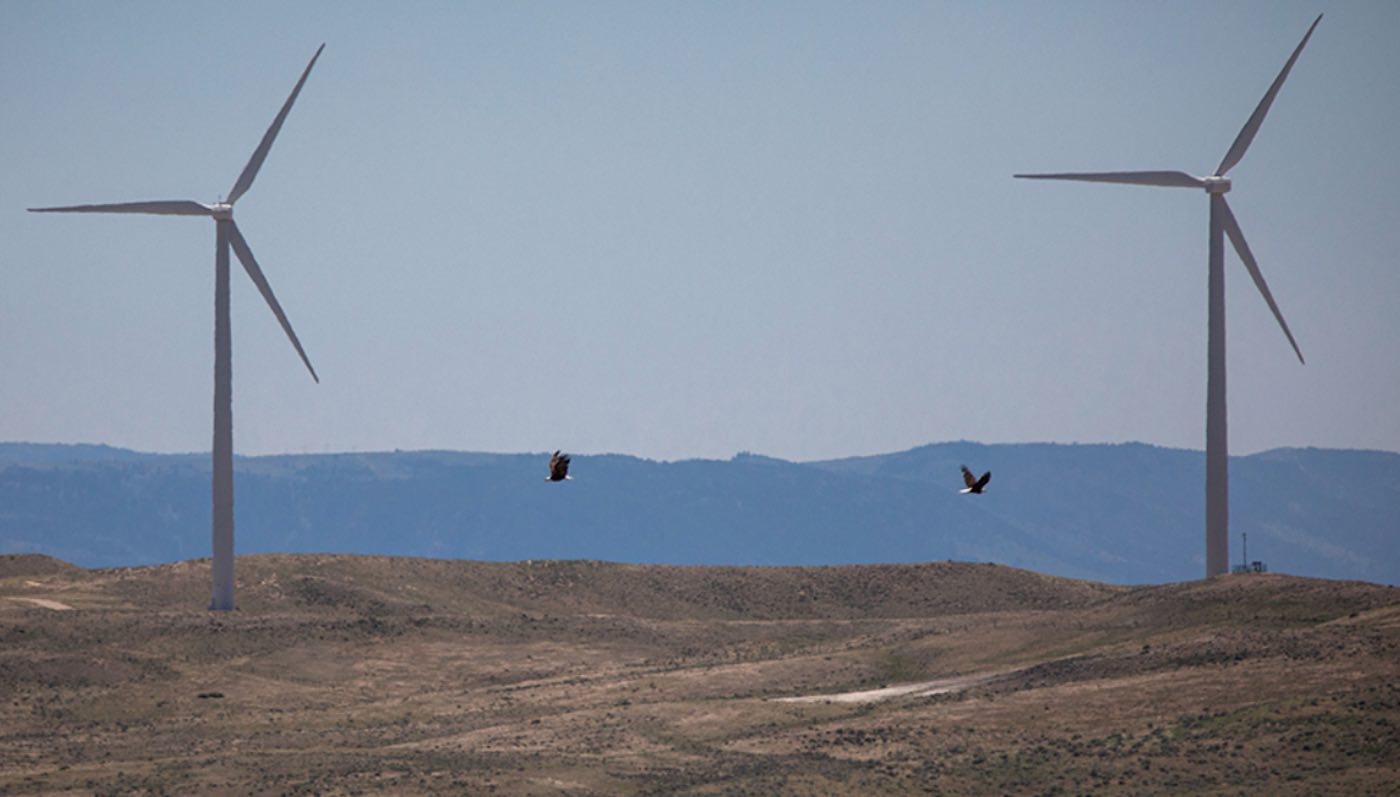Wind power is a powerful tool for reducing carbon emissions that cause climate change. The turbines, however, can be a threat to birds and bats, which is why experts are looking for—and finding—ways to eliminate the danger.

The US government has allocated $13.5 million to look for solutions. But, already a Boulder, Colorado company has produced a camera- and AI-based technology that can recognize eagles, hawks and other raptors as they approach in enough time to pause turbines in their flight path.
Their tool, called IdentiFlight, can detect 5.62 times more bird flights than human observers alone, and with an accuracy rate of 94 percent. https://www.identiflight.com/
Using high-precision optical sensors, the system calculates a bird’s speed and flight trajectory, and if it is on a collision path with a turbine, a signal is sent to shut that turbine down.
Winning an award for its performance in Australia, the tracking system was installed in 2018 at a Tasmanian facility and was found to cut eagle deaths at the Cattle Hill Wind Farm by more than four-fifths.
Each day, signals have shut-down their movement an average of 400 times—across the field of 48 turbines—for two to three minutes each time.
Across the globe, Duke Energy in Wyoming is employing the same technology with impressive results at its Top of the World Windpower Project.
The IdentiFlight network of camera units watch for bald and golden eagles. When a camera detects an approaching object, the system determines whether it’s an eagle within seconds.
Top of the World—named for a ridge where golden eagles roost—was the first wind site to use the technology. In 2014, IdentiFlight’s manufacturer, Boulder Imaging, used Top of the World for testing after eagles fatalities left the company in violation of the Migratory Bird Treaty Act.
RELATED: Retired Wind Turbine Blades Get Turned into Bridges and Reinforced Concrete

47 units made of eight wide-angle cameras now constantly scan the sky to monitor all 110 turbines. The camera unit is mounted to the top of a 30-foot pole and powered by software that learns and improves with each photo taken, as ornithologists vet previously identified birds.
An independent study conducted in 2020 by The Peregrine Fund, Western EcoSystems Technology, and the US Geological Survey, showed an 82 percent reduction in eagle deaths at the site, which is located in Glenrock.
Bird lover and director of National Audubon Society’s Clean Energy Initiative, Garry George, admits, “Our own science shows that climate change is by far the biggest threat to birds and the places wildlife need to survive.”
CHECK OUT: Largest Farm to Grow Crops Under Solar Panels Proves to Be a Bumper Crop for Agrivoltaic Land Use
“IdentiFlight will make it possible to combat the worst effects of climate change and protect the birds we love in the process.”
Indeed, a 2009 study using US and European data on bird deaths analyzed the number killed per unit of power generated by wind power vs fossil fuel and nuclear, estimating that for every bird killed by a turbine, nuclear and fossil fuel powered plants killed 2,118.
Eagles have been capable of adapting, too. Some of the raptors living at Top of the World have been on the site for years, and have had no issues avoiding the blades.
Duke Energy announced it is installing IdentiFlight at Frontier Windpower II in Oklahoma and Wyoming’s Campbell Hill site.
FLY This Innovation to Your Flock of Friends on Social Media…




















